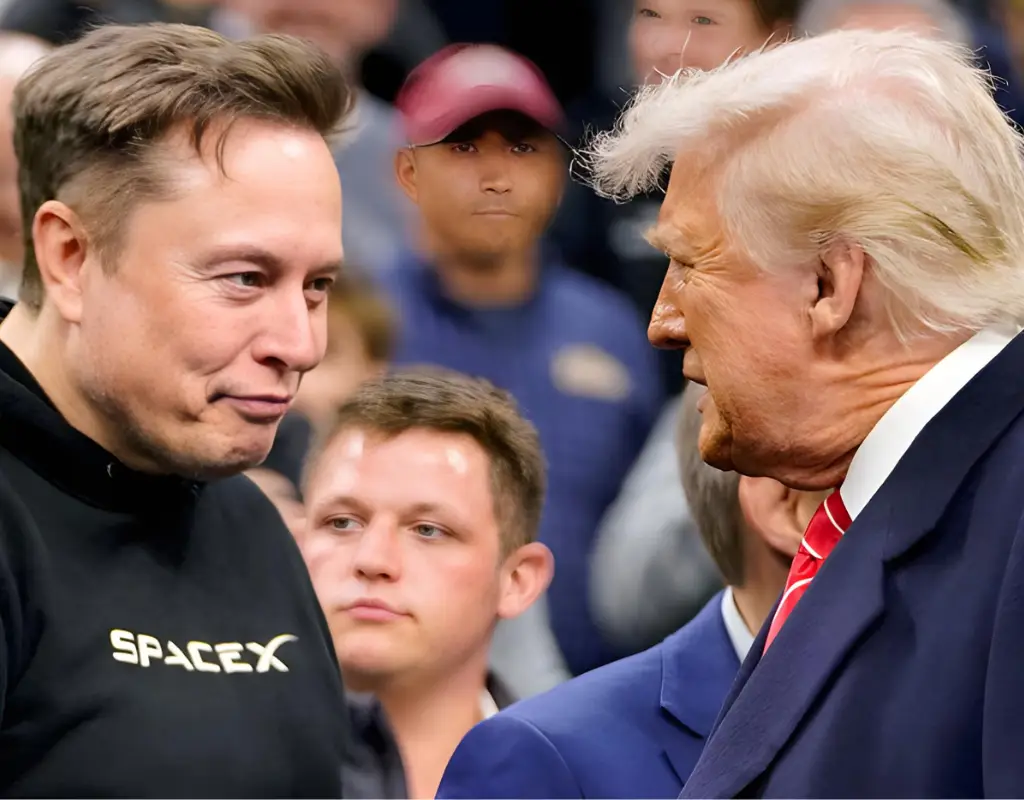Now Reading: Decoding the Dilemma: Trump’s 2025 Trade Policies and Their Evolving Challenge for India
-
01
Decoding the Dilemma: Trump’s 2025 Trade Policies and Their Evolving Challenge for India
Decoding the Dilemma: Trump’s 2025 Trade Policies and Their Evolving Challenge for India

As of July 2025, how are Trump’s tariff policies impacting India? Explore the latest developments, sector-specific effects, and ongoing trade negotiations.
The global trade landscape is a constantly shifting mosaic, and in July 2025, the spotlight remains firmly on the United States and its assertive trade policies under the Trump administration.

While initial announcements in April 2025 sent ripples of concern across numerous economies, including India, the situation has evolved. Far from a uniform, high-percentage tariff on all goods, the narrative is more nuanced, involving sector-specific duties, ongoing negotiations, and India’s strategic diplomatic maneuvering.
This comprehensive analysis delves into the intricate layers of Trump’s 2025 trade agenda as it pertains to India, providing up-to-date facts, expert insights, and a balanced perspective on what lies ahead.
The Genesis of the Trump’s 2025 Tariff Discussions: Reciprocal Tariffs and Their Intent

In April 2025, President Donald Trump initiated a policy framework centered around “reciprocal tariffs.” The stated intent behind this move was to address perceived trade imbalances and ensure that other nations did not levy higher duties on American goods than the US imposed on their exports.
This framework initially outlined a baseline 10% tariff on imports from most countries, with the potential for additional, country-specific duties. For India, the initial discussions, as reported in early April, hovered around a potential 26% ad valorem duty on a broad spectrum of its exports.
However, the implementation of these higher, country-specific reciprocal tariffs was temporarily suspended for 90 days, setting an initial deadline of July 9, 2025.

This grace period was intended to allow countries, including India, to engage in negotiations and potentially finalize trade agreements that would mitigate or entirely avoid the full impact of these proposed duties.
As of early July 2025, this deadline was further extended to August 1, 2025, providing additional breathing room for ongoing talks.
It’s crucial to understand that while Trump’s rhetoric often centers on broad tariffs, the practical application often involves targeted measures and significant room for negotiation. This is particularly evident in the current US-India trade dialogue.
1. The Evolving Trump Tariff Landscape: Beyond a Single Percentage
The initial talk of a flat 26% or 27% tariff on all Indian goods has largely dissipated as the situation has matured. While the concept of reciprocal tariffs remains, the specific rates and their application are subject to ongoing bilateral negotiations.
- Current Reality: As of early July 2025, while the threat of higher reciprocal tariffs (beyond the baseline 10% that may apply broadly) looms, India was notably excluded from the initial tranche of formal tariff notification letters sent by the Trump administration to other nations like Japan, South Korea, Bangladesh, and Vietnam, where new tariffs are set to take effect from August 1. This signals that trade talks with India are progressing.
- The Nuance: Instead of a blanket figure, the discussion is more about specific product categories and the outcome of the mini-trade deal being negotiated. This makes the situation far more complex than a simple “26% or 27% riddle.”
Why It’s a Big Deal: Businesses thrive on certainty. The ambiguity surrounding the final tariff rates, even with the positive sign of exclusion from initial letters, still creates an environment of caution for Indian exporters as they plan future shipments and investments.
2. Market Reactions: Initial Jitters vs. Negotiated Stability
When the initial reciprocal tariff framework was announced in early April 2025, Indian markets, like many global markets, reacted with significant volatility.
- Initial Volatility: Reports from early April 2025 indicated a knee-jerk reaction: the BSE Sensex and Nifty50 experienced dips, and the Indian Rupee saw some depreciation against the US Dollar. This is a common response to trade uncertainty, as investors factor in potential impacts on corporate earnings and economic growth.
- Subsequent Stabilization: However, as the 90-day pause was announced and, more recently, extended to August 1, coupled with positive signals from trade negotiations, markets have largely stabilized. The initial “raw fear” has given way to cautious optimism that a resolution may be found. The Rupee’s movements now reflect a broader set of economic indicators rather than just immediate tariff concerns.
Why It’s a Big Deal: Market reactions are a barometer of investor confidence. While initial shocks are expected, sustained stability indicates that the market believes a favorable outcome for India is plausible.
3. Pharmaceuticals: A Critical Exemption, With a Catch
India’s pharmaceutical sector is a global powerhouse, supplying a substantial portion of generic medicines to the US market. This critical sector has, for now, largely escaped the direct impact of the initial reciprocal tariffs.
- Current Status: Pharmaceuticals were included in a list of exempted items in the initial April 2025 executive order, acknowledging their crucial role in both nations’ healthcare systems.
- The Looming Threat: However, President Trump has explicitly warned that future tariffs on pharmaceuticals could be “very, very high,” potentially up to 200%, after a grace period of about a year, to encourage reshoring of drug manufacturing to the US. This “future duty” threat, while not immediate, introduces long-term uncertainty for India’s $9.8 billion (FY25) pharma exports to the US.
Why It’s a Big Deal: While a temporary win, the long-term threat to pharmaceutical exports underscores the US administration’s broader ambition to reduce reliance on foreign supply chains, even for essential goods. This could necessitate strategic recalibration for major Indian pharma companies like Cipla, Aurobindo Pharma, Sun Pharma, and Lupin.
4. Auto Parts: India’s Proactive Response to Existing Tariffs
While the reciprocal tariffs were being discussed, the US had already imposed a 25% tariff on imports of Indian auto parts in March 2025, under Section 232 of the Trade Expansion Act. This was a separate, sector-specific measure.
- India’s Retaliation: India has formally reserved its right to impose retaliatory duties on the US for these auto tariffs, filing a notification with the WTO. This is a procedural move to protect its trade interests and signals India’s firm stance that it will respond to measures deemed unfair.
- Ongoing Discussions: Despite this formal move, Indian officials have clarified that it will not derail the ongoing talks for the broader bilateral trade deal, emphasizing that these are distinct issues being handled concurrently.
Why It’s a Big Deal: The auto sector, including major players like Tata Motors, is a significant part of India’s manufacturing prowess. These tariffs can increase costs for Indian auto component exporters, potentially impacting their competitiveness and market share in the US.
5. Textiles: A Potential Strategic Advantage
Surprisingly, the broader US tariff strategy against other Asian economies might inadvertently create an opportunity for India’s textile sector.
- Comparative Advantage: With countries like Bangladesh facing duties as high as 35% and Vietnam facing 20% on their textile exports to the US (despite recent trade deals with the US), India’s currently negotiated or potential future tariff rates (which may be lower due to ongoing talks) could make its textiles more competitive.
- Shifting Supply Chains: US buyers, seeking cost-effective alternatives, might increasingly pivot towards Indian cotton and apparel. This could provide a significant boost to major Indian textile hubs like Tirupur and Ludhiana.
Why It’s a Big Deal: This scenario presents a unique opportunity for India to capture a larger share of the global textile market and drive a surge in exports, provided Indian manufacturers can scale up to meet demand.
6. India’s Measured Diplomacy: Negotiations Over Retaliation
Unlike some other nations that have responded with immediate and sharp retaliatory tariffs, India under Prime Minister Modi has opted for a strategy of proactive engagement and calibrated diplomacy.
- Focus on Negotiation: India has consistently prioritized reaching a mutually beneficial trade deal. Commerce Minister Piyush Goyal has firmly stated that India will not sign a deal under pressure or by arbitrary deadlines, but only when it is fully finalized and in the national interest.
- Progress in Talks: The fact that India was not included in the initial round of tariff letters sent to other countries for August 1 implementation strongly indicates that the bilateral trade negotiations are progressing positively, and both sides are “very close” to an agreement, as stated by President Trump.
Why It’s a Big Deal: India’s patient and strategic approach reflects its growing economic leverage and its commitment to long-term trade relations. Successful negotiations could lead to a stable trade environment, benefiting both economies.
7. Gems and Jewellery: A Sector Under Pressure
India’s vibrant gems and jewellery sector, particularly the diamond polishing industry centered in Surat, has faced significant headwinds.
- Vulnerability to Tariffs: This sector, heavily reliant on exports to the US (around $4 billion annually), is highly sensitive to any tariff imposition. The initial discussions of a 26-27% reciprocal tariff generated considerable concern, leading to a downturn in exports and potential job losses.
- Current Status: While the specific reciprocal tariffs are under negotiation, broader global uncertainties, including existing US trade policies and shifts in consumer demand, have already impacted the sector. India’s gems and jewellery exports have seen a decline in recent months (e.g., a 15% fall in May 2025), even as gold jewellery shows resilience.
Why It’s a Big Deal: The sector employs a large workforce, and any sustained decline due to tariffs or trade friction could have significant socio-economic implications for regions dependent on this industry.
8. The Extended Reprieve: A Crucial Window for Deal-Making
The initial 90-day pause, which pushed the deadline to July 9, 2025, and its subsequent extension to August 1, 2025, has been a critical development for India.
- Time for Negotiation: This reprieve provides Indian and US negotiators crucial additional time to iron out the details of a mini-trade deal. The ongoing talks aim to address key market access issues for both sides.
- “Mini-Deal” Focus: The current efforts are concentrated on a “mini-deal” focusing on goods, potentially leaving more sensitive areas like agriculture and dairy for later phases.
Why It’s a Big Deal: This extension is a strong positive signal. It suggests that both the US and India are committed to finding a mutually agreeable solution and that outright, punitive tariffs on India’s broad exports may be avoided if a deal is struck by the revised deadline.
9. Economic Resilience: India’s Capacity to Absorb Shocks
While any tariff imposition by Donald Trump can be detrimental, experts suggest that India’s economy is relatively well-positioned to absorb such shocks compared to smaller, more export-dependent nations.
- Domestic Market Strength: With exports accounting for approximately 20% of its GDP, India’s robust domestic market provides a significant buffer against external trade shocks.
- GDP Impact: While initial estimates suggested tariffs could trim India’s GDP by 0.2-0.5%, the evolving scenario with a potential trade deal could mitigate these figures. Moody’s Ratings, for instance, has suggested that India might even benefit from shifting global supply chains if it faces lower tariffs than other Asia-Pacific peers.
- Diversification Efforts: India’s ongoing efforts to diversify its trade partners and finalize Free Trade Agreements (FTAs) with regions like the UK and the EU also contribute to its resilience.
Why It’s a Big Deal: India’s economic fundamentals and strategic trade policies indicate its ability to weather potential trade disruptions, positioning it as a resilient player in the global economy.
10. The Diplomatic Offensive: Softening the Edges
Beyond formal negotiations, India has engaged in a calculated diplomatic offensive, leveraging existing relationships and making strategic concessions to create a more favorable environment.
- Pre-emptive Measures: Prior to the tariff announcements, India had already taken steps like cutting taxes on certain US imports (e.g., whiskey, Harley-Davidson bikes, some tech services), signaling its willingness to address US concerns.
- High-Level Engagements: Regular high-level engagements, including the February 2025 Modi-Trump summit, where significant energy deals were reportedly sealed, help build rapport and create channels for constructive dialogue that extend beyond formal trade figures. Why It’s a Big Deal: Personal diplomacy and strategic, reciprocal gestures can significantly influence trade outcomes, demonstrating a commitment to strengthening bilateral ties and potentially softening the impact of broader trade pressures.
Where Does India Go From Here? The Path Ahead
The current phase of US-India trade relations is characterized by a delicate balance of assertive trade policies from the US and strategic, patient diplomacy from India. The August 1, 2025 deadline for the extended tariff suspension is rapidly approaching, making the outcome of the ongoing mini-trade deal negotiations paramount.
- The “Mini-Deal” is Key: A successful conclusion of the interim trade agreement, even if limited in scope, would be a significant win for India, likely leading to the full or partial avoidance of the reciprocal tariffs.
- Sector-Specific Vigilance: While some sectors like textiles might see an advantage, others like auto parts and potentially pharmaceuticals (in the longer term) will require continued vigilance and strategic adaptation.
- Long-Term Strategy: India’s focus on diversifying its export markets and strengthening its manufacturing capabilities will remain crucial regardless of the immediate tariff outcomes.
The “Trump’s 2025 tariffs” story is not a static one; it’s a dynamic saga of negotiation, adaptation, and strategic maneuvering. India’s resilience, coupled with its diplomatic acumen, will be instrumental in navigating these crosscurrents and charting a course for continued economic growth.
What’s your take? Do you believe India can secure a comprehensive trade deal, or will it face more targeted pressures? Share your insights and join the conversation!
Also read: You’re Already A Time Traveler! Mind-Blowing Ways Physics Proves Time Travel In 2025. – ParsoTak.in



















